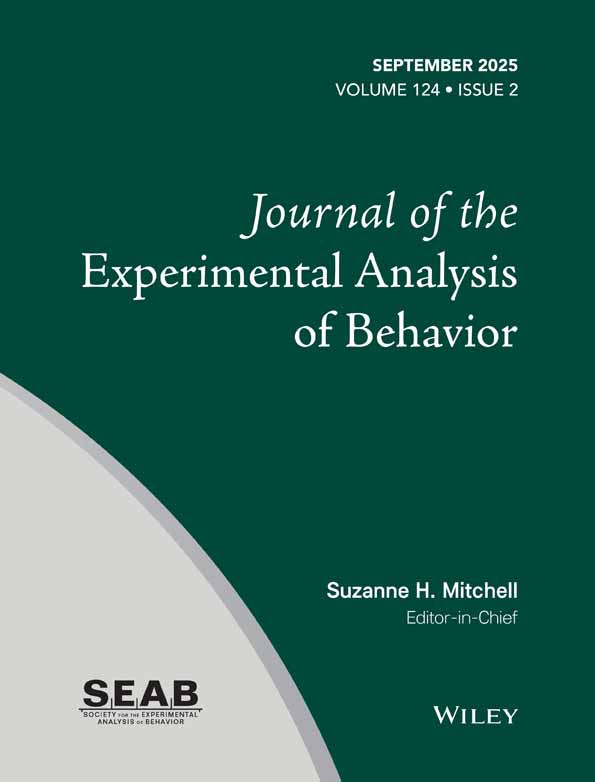REINFORCER CONTROL BY COMPARISON-STIMULUS COLOR AND LOCATION IN A DELAYED MATCHING-TO-SAMPLE TASK
Abstract
Six pigeons were trained in a delayed matching-to-sample task involving bright- and dim-yellow samples on a central key, a five-peck response requirement to either sample, a constant 1.5-s delay, and the presentation of comparison stimuli composed of red on the left key and green on the right key or vice versa. Green-key responses were occasionally reinforced following the dimmer-yellow sample, and red-key responses were occasionally reinforced following the brighter-yellow sample. Reinforcer delivery was controlled such that the distribution of reinforcers across both comparison-stimulus color and comparison-stimulus location could be varied systematically and independently across conditions. Matching accuracy was high throughout. The ratio of left to right side-key responses increased as the ratio of left to right reinforcers increased, the ratio of red to green responses increased as the ratio of red to green reinforcers increased, and there was no interaction between these variables. However, side-key biases were more sensitive to the distribution of reinforcers across key location than were comparison-color biases to the distribution of reinforcers across key color. An extension of Davison and Tustin's (1978) model of DMTS performance fit the data well, but the results were also consistent with an alternative theory of conditional discrimination performance (Jones, 2003) that calls for a conceptually distinct quantitative model.




